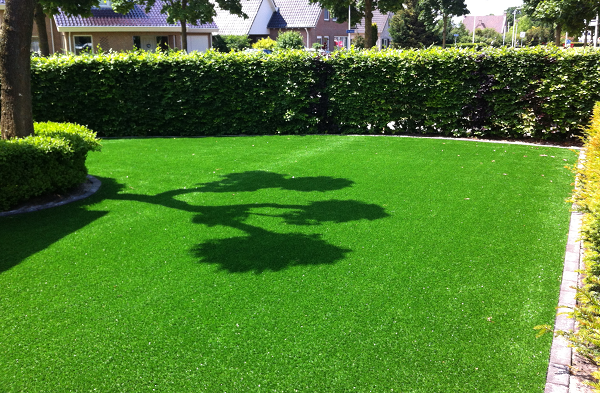Keys to Successful Turf Establishment of Cool Season Grasses

Establishing new turf can be frustrating at times, but following some key principles can help ease that frustration. Cool season grasses are either seeded or sodded; this article is going to focus on the principles of establishing turf from cool season grass seed.
Timing
Timing is the first critical factor to consider when establishing any new turf. Cool season grass species are most competitive in the cooler temperatures of the spring and fall. The preferred time for seeding of cool season grasses is in the late summer / early fall. Fall weather typically has a more moderate temperature profile and a good amount of precipitation. There is also less pressure from weeds like crabgrass in the fall. Fall seeding gives the seedlings time to mature so that they can withstand temperature and drought stress.
Spring is the second best choice for timing because it has a cooler temperature profile suitable for seed germination. There are a couple of things to consider when performing spring seeding. The first is not seeding too early. Seed germination can be delayed due to lower soil temperatures and you may be tempted to overseed when it isn’t necessary. The second challenge with spring seeding is the competition from annual grassy weeds like crabgrass. These weeds will germinate at similar temperatures as the turfgrass and you cannot use a typical pre-emergent weed control because it will also stop the turfgrass from germinating. There is one solution to this problem and that is using a product like ProScape® 21-22-4 Start Fertilizer with Mesotrione. The Mesotrione product prevents a host of weeds including crabgrass, but allows most cool season turfgrasses to germinate safely.
Soil Preparation
Preparing the soil needs to be done before sewing the seed. Getting a soil test to determine if there are any nutrient deficiencies in the soil is very helpful in preventing future problems due to pH imbalances, nutrient deficiencies and other issues. If a change to the soil profile is to be made now is the time. Once the profile has been set and any soil amendment is made, the soil should be tilled to a depth of 4-6”. Remove large pieces of debris from the soil during this process, large pieces of stone or wood will show up as spots in the future when the grass is under stress. At this point the top soil surface should be spread evenly and lightly raked.
Fertilization
A good starter fertilizer with a high phosphorus content, like ProScape 16-25-12 25% MESA, is recommended to help promote root development. This should be spread evenly over the soil surface at a rate of 5lbs per 1000 sq ft unless soil tests suggest a different rate.
Seed Choice (link to seed tag article) and application rate
Choosing the right grass seed for the application is also crucial to successful long-term of the turf. Factors like the amount of traffic expected on the turf, shade, mowing, irrigation all need to be considered when choosing the right species for your turf. If you need help choosing the correct seed – this article has information to help guide your decision.
Seeding Methods
Spreading the seed evenly and at the recommended rate is important to having a uniform stand of turf. This can be done by hand for smaller areas, using hand spreaders, broadcast or drop spreaders. Splitting the amount of seed in half and spreading half of it back and forth in one direction and the other half back and forth at a right angle to the first passes makes it less likely to have a bare spot.
Irrigation and Mulching
Water management during germination and the early phases of seedling development is crucial. Keeping the soil moist throughout the process keeps the seedlings growing. It is necessary for the seed to germinate and the first few days it is very easy to lose the entire turf stand if the seedlings dry out due to lack of moisture. When it isn’t possible to have regular irrigation, mulching is a typical option and is often used to help maintain moisture in the soil and also prevent movement of grass seed due to wind and rain. There are many different types of mulch; the most popular is straw mulch. One potential risk with using straw mulch is the introduction of weed seeds. If the straw is not kiln dried to kill off weed seeds you run the risk of creating problems for yourself. PennMulch is pelletized paper mulch with a tackifier that is guaranteed to not have any weed seeds and binds the soil and seed together. It is also a starter fertilizer and when applied at the recommended rate is the same as a 10-20-05 starter fertilizer.
Post Germination Care
Once the seedlings have reached about 1 inch in height the roots will be deep enough to start obtaining more moisture from the soil. Reducing the watering frequency but making sure to have a thorough soaking of the soil is the best practice to get roots to develop properly. At this point fertilizing with nitrogen will be important to help stimulate growth. The first mowing for typical turf should be done once it reaches about 3 inches and no more than a third of the leaf tissue should be removed. More highly managed turf like golf course greens, tees and fairways will require special consideration and may take multiple mowing to achieve the desired height.